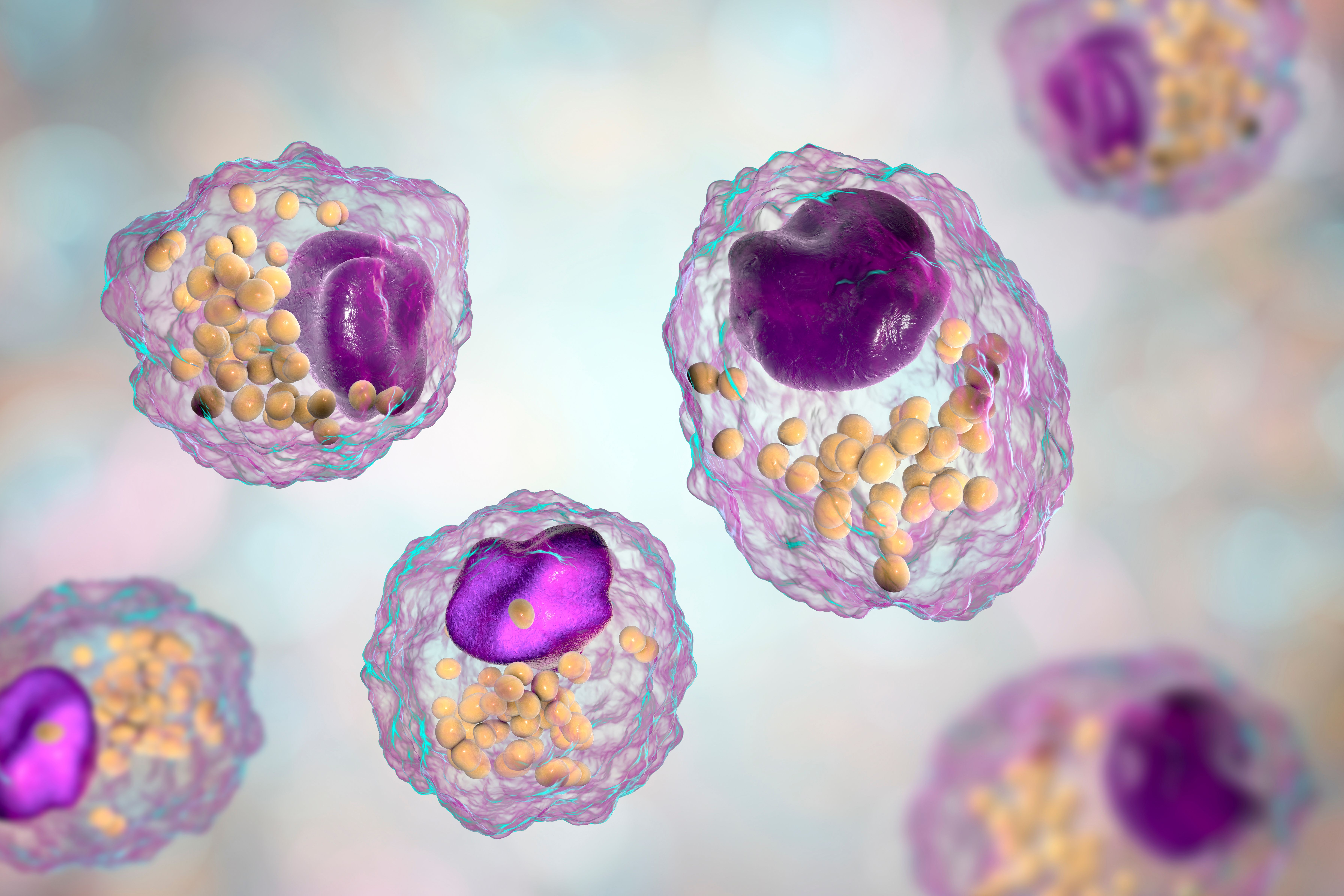Dual-Isotope Labeling Method Unlocks Insights into Lipid Metabolism and Ferroptosis
In a recent study, researchers used a dual-isotope labeling method to help improve our understanding of lipid metabolism.
In a study published in the Journal of the American Society for Mass Spectrometry, researchers introduced a novel dual-isotope deuterium labeling method that could be used to increase our understanding of lipid metabolism and its implications in diseases such as cancer, cell death, and inflammation (1). Libin Xu, associate professor at the University of Washington was the leading researcher (and corresponding author) of this study, assisted by his colleagues Noelle Reimers, Quynh Do, Rutan Zhang, Angela Guo, Ryan Ostrander, Alyson Shoji, and Chau Vuong.
Foam cell, a macrophage cell with lipid droplets | Image Credit: © Dr_Microbe - stock.adobe.com

Lipid metabolism is a complex and vital cellular process. It has long been associated with various diseases, but the inherent challenges in lipidomics research have limited our ability to gain comprehensive insights (1). The primary difficulty arises from the vast structural diversity of lipids and the narrow range of mass and polarity that characterizes them. Isotope labeling, a commonly employed technique in metabolomics, allows researchers to track the metabolism of labeled compounds (1). However, applying this technique to lipidomics has been an ongoing challenge task because of the difficulty in differentiating labeled lipids from the multitude of endogenous lipids with similar mass ranges.
This new method focuses on tracking the metabolic fate of exogenous polyunsaturated fatty acids, notably arachidonic acid (AA), in the context of ferroptosis—a form of cell death that heavily relies on lipid peroxidation (1). Ferroptosis is of particular interest because it is linked to various diseases, including cancer.
The key breakthrough in this study is the utilization of dual-isotope deuterium labeling. By introducing two isotope labels rather than one, the researchers can now uniquely identify labeled species through a distinctive doublet peak in the resulting mass spectra. This approach overcomes the challenge of distinguishing a single isotopically labeled lipid from the numerous endogenous lipids that share the same mass range (1).
To facilitate the data analysis and interpretation of the dual-isotope labeling, the researchers developed a Python-based software called D-Tracer (1). This software efficiently extracts metabolites with dual-isotope labels, making it possible to identify labeled species more accurately.
The researchers applied hydrophilic interaction–ion mobility–mass spectrometry (HILIC-IM-MS) to track the changes in exogenous arachidonic acid incorporation in the presence and absence of a ferroptosis inducer. This allowed them to gain critical insights into the role of AA in ferroptosis and how it might be manipulated to impact this form of cell death (1).
The identified labeled species were then further analyzed using LiPydomics based on their retention times, collision cross-sections, and mass-to-charge (m/z) ratios. This multifaceted approach revealed significant differences in exogenous AA incorporation, shedding light on the intricate relationship between lipid metabolism and ferroptosis.
With the dual-isotope labeling method and the D-Tracer software at their disposal, scientists may be able to delve deeper into the complex world of lipids, potentially uncovering new targets for therapeutic interventions and disease management (1).
This article was written with the help of artificial intelligence and has been edited to ensure accuracy and clarity. You can read more about our policy for using AI here.
Reference
(1) Reimers, N.; Do, Q.; Zhang, R.; Guo, A.; Ostrander, R.; Shoji, A.; Vuong, C.; Xu, L. Tracking the Metabolic Fate of Exogenous Arachidonic Acid in Ferroptosis Using Dual-Isotope Labeling Lipidomics. J. Am. Soc. Mass Spectrom. 2023, 34, 2016–2024. DOI: 10.1021/jasms.3c00181
Study Explores Thin-Film Extraction of Biogenic Amines via HPLC-MS/MS
March 27th 2025Scientists from Tabriz University and the University of Tabriz explored cellulose acetate-UiO-66-COOH as an affordable coating sorbent for thin film extraction of biogenic amines from cheese and alcohol-free beverages using HPLC-MS/MS.
Quantifying Microplastics in Meconium Samples Using Pyrolysis–GC-MS
March 26th 2025Using pyrolysis-gas chromatography and mass spectrometry, scientists from Fudan University and the Putuo District Center for Disease Control and Prevention detected and quantified microplastics in newborn stool samples.
Multi-Step Preparative LC–MS Workflow for Peptide Purification
March 21st 2025This article introduces a multi-step preparative purification workflow for synthetic peptides using liquid chromatography–mass spectrometry (LC–MS). The process involves optimizing separation conditions, scaling-up, fractionating, and confirming purity and recovery, using a single LC–MS system. High purity and recovery rates for synthetic peptides such as parathormone (PTH) are achieved. The method allows efficient purification and accurate confirmation of peptide synthesis and is suitable for handling complex preparative purification tasks.






